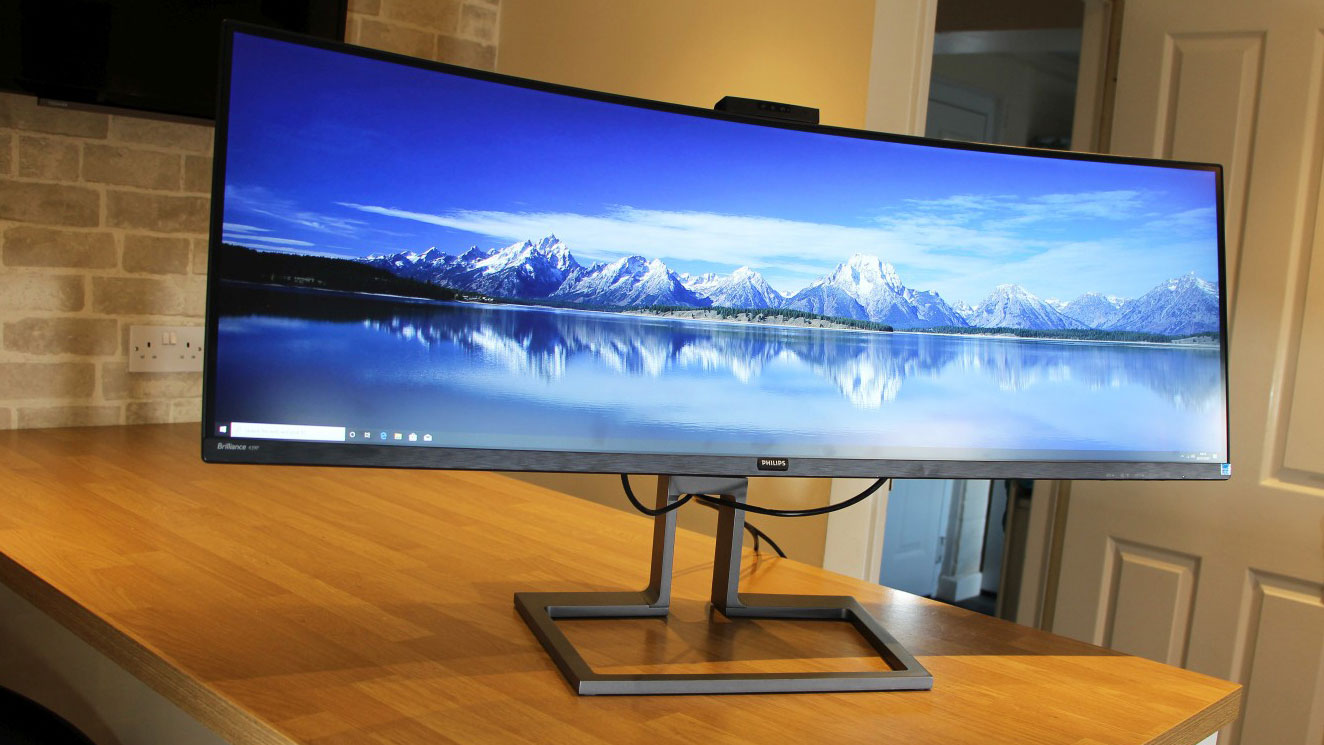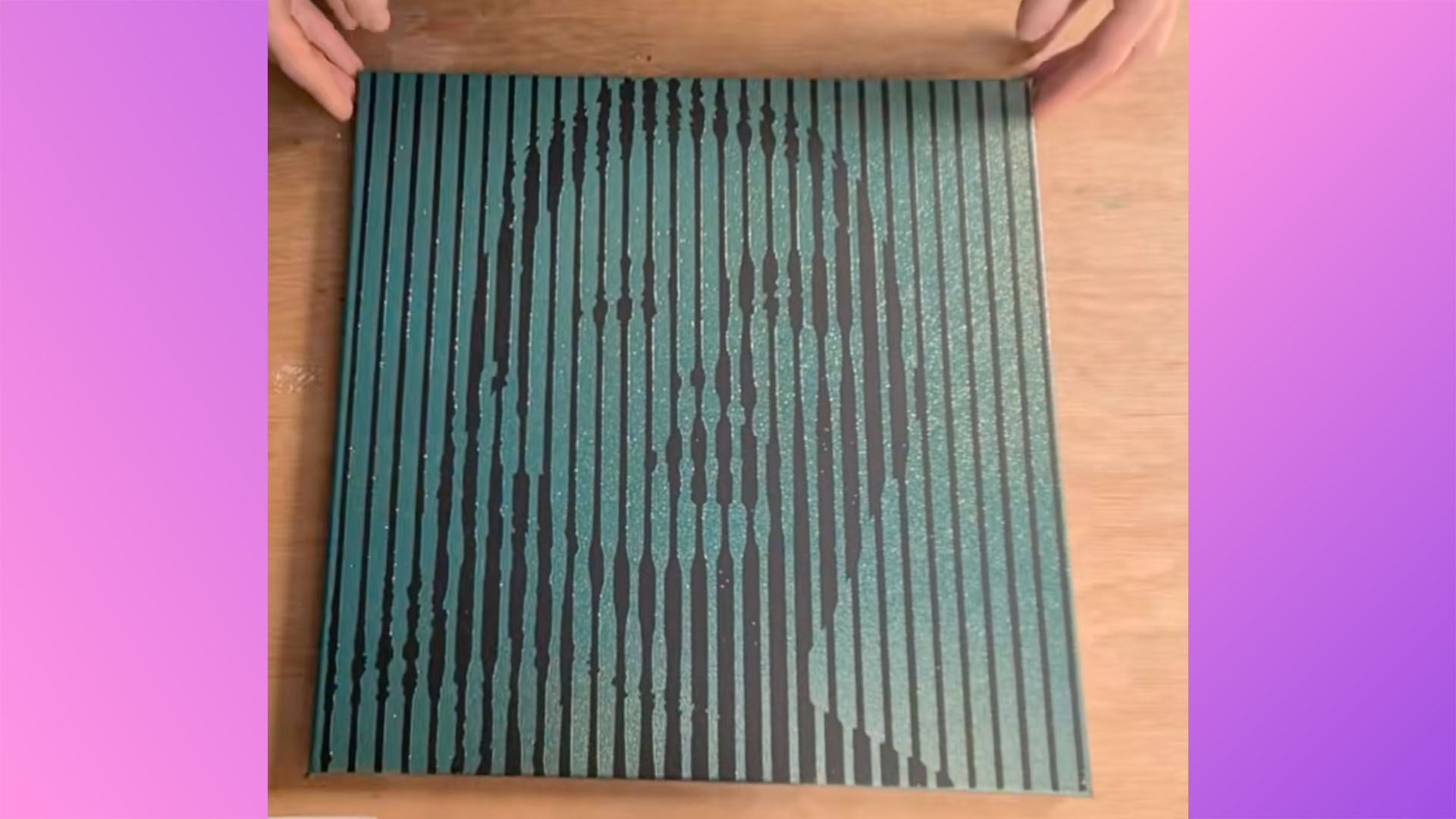Our Verdict
The Philips Brilliance 439P9H’s widescreen design is a double-edged sword, but this screen does serve up great sRGB image quality and has a broad range of features
For
- Effective widescreen design
- Great contrast and sRGB quality
- Broad feature set
Against
- Widescreen is divisive
- Has uniformity issues
- Can’t handle AdobeRGB or HDR
Why you can trust Creative Bloq
The Philips Brilliance 439P9H monitor is an eye-catching screen – not least because of its size and form factor. This 43-inch unit is a curved display, and it has a resolution of 3,840 x 1,200 alongside a super-wide aspect ratio of 32:10.
The huge size and width of this screen lend the Philips to certain creative tasks – but like most of the best ultrawide monitors, it’s not cheap, and this design won’t suit everyone.
If you are after something a little smaller, then also don't miss our guide to the best monitors for artists and designers.
Philips Brilliance 439P9H monitor: Key specs
Screen size: 43-inch | Aspect ratio: 32:10 | Resolution: 3,840 x 1,200 | Panel technology: LED VA | Colour depth: 10-bit | Response time: 4ms | Adjustment: Tilt -5° to 10°, 130mm height adjustment, 20° swivel, 100mm VESA mount | Connectivity: 1 x DisplayPort 1.4, 2 x HDMI 2.0, 4 x USB 3.2, 2 x USB 3.2 Type-C, 1 x Gigabit Ethernet | Dimensions: 1058 x 303 x 460mm (WxDxH) | Weight: 14.4kg | Warranty: 3yr RTB
Philips Brilliance 439P9H: Design

The huge width of this screen means that the Philips has more versatility with certain applications and situations. If you want to run two or three apps side-by-side, then this display has the space. It’s also a great option if you work with software that uses horizontal timelines or layouts, like audio and video editing software and certain photography apps.
In essence, it’s like having two 16:10 panels without the discrepancies that can be introduced by using different displays. Using a single screen also eliminates bezels and cables.
The curve helps, too. The Philips uses a conventional radius of 1800R, and it improves immersion and consistency because it’s easier to see the corners of the screen.
However, the 439P9H’s size doesn’t suit every situation. Having one display rather than two means you get less versatility when it comes to snapping windows and applications around your desktop. The 439P9H’s vertical resolution of 1,200 might also cause issues. While it does offer more vertical space than a 1080p panel, it can’t match the pixel count of 1440p or 4K screens.
The Philips has a density level of 94ppi. That’s a middling figure: crisp enough for most photo, video and design tasks, but short of the 130ppi or higher levels you’ll find on 4K displays.
The 439P9H uses VA technology and 10-bit colour, and it has AMD FreeSync that runs at 100Hz – good for smooth animation. It also supports DisplayHDR 400, although don’t get excited about that – it’s an entry-level protocol that only delivers a tiny boost to HDR content.
Philips Brilliance 439P9H: Features

The 439P9H backs up its specification with good physical features. It’s got a KVM switch, so two inputs can be controlled using one set of peripherals. Its webcam works with Windows Hello, and it can be hidden in the top bezel for privacy.
Its two USB-C 3.2 ports deliver power, and it has four full-size USB 3.2 ports with one that can fast-charge smartphones. The Philips has Gigabit Ethernet, and two DisplayPort 1.4 connectors alongside one HDMI 2.0b connection (see our guide to USB cables if you're confused about which ones you need).
It’s good connectivity, although it is a little disappointing that all of the USB ports face downwards on the rear of the screen – it makes them difficult to reach.
The Philips looks the part, with smart design and a minimal stand that doesn’t take up too much room. Build quality is solid, and the Philips has 130mm of height adjustment. It tilts and swivels, and works with 100mm VESA mounts. That’s good versatility – it’s unusual to find this much movement on a widescreen.
Make sure you’ve got plenty of space, though: it’s 1,058mm wide and weighs a mighty 14.4kg.
There’s nothing unusual about the Philips on-screen display, and that’s not a bad thing at all – it has loads of options, it’s easy to navigate and it’s very fast. We’re pleased to see physical buttons beneath the bottom bezel rather than temperamental touch-pads.
Bear in mind, though, that this screen doesn’t have professional display modes beyond sRGB – there are no dedicated options here for DCI-P3, BT.709, BT.2020 or any other colour spaces.
Philips Brilliance 439P9H: Screen quality

The 439P9H serves up stunning contrast. At default levels, this display runs at 60% of its full brightness level – and even here its brightness measurement of 400cd/m2 is fantastic. It’s high enough to handle any creative task. It’s joined by a black measurement of 0.18cd/m2, which is equally impressive – deeper than most displays, and low enough to deliver superb depth and subtlety in darker areas.
Those initial figures saw the Philips return a contrast ratio of 2,222:1. That’s huge – better than any IPS panel, and a typical strong point of VA displays. The impressive contrast ratio means that this display has superb punch and vibrancy at every point on the colour gamut.
Ramping up the screen’s brightness to 100% saw the backlight strength improve to 529cd/m2. The Philips’ superb contrast remained consistent. That’s also a high enough figure for this screen to handle DisplayHDR 400 content, but it’s not particularly high in terms of HDR in general – so you’ll only get a modest boost to HDR media here.
Philips Brilliance 439P9H: Colour accuracy

The Philips pairs its stunning contrast with reasonable colours. The Delta E of 2.27 is good, rather than great – anything lower than 2.0 will be better for precise colour work. The colour temperature of 6,403K is good, but it’s still possible to find screens that get closer to the 6,500K ideal.
Happily, switching to the 439P9H’s sRGB mode improved things, with the Delta E and colour temperature results developing to 1.25 and 6,469K. They’re both top-tier results.
That sRGB mode is where this screen shines – the Philips rendered a solid 97.9% of the sRGB gamut. However, the Philips only rendered 79.4% and 86.9% of the Adobe RGB and DCI-P3 colour spaces. Neither result is good enough to enable professional work in these areas.
Elsewhere, the Photo and Office screen modes don’t deliver significant improvements and the Movie mode makes the whole screen poorer. The sRGB option is the best mode by far.
The 439P9H also suffers when it comes to uniformity. Along the left-hand edge of the screen the backlight lost 35% of its strength, and 28% of the backlight vanished on the right-hand side. It’s not unusual for widescreens to have uniformity issues, but these results are poor even when stacked up against other displays in this category.
Philips Brilliance 439P9H: Should you buy it?
The Philips Brilliance 439P9H is impressive in several key areas. The size and aspect ratio are key: the size and horizontal space are a boon for lots of applications, and the curve makes this screen easier to use. The features make the Philips easy to live with, too – this screen has loads of USB options, a KVM switch, wired networking and a webcam alongside good adjustment.
When it comes to image quality, though, the 439P9H is mixed. It has fantastic contrast and sRGB colour, which makes it great for mainstream work. However, this display doesn’t have the uniformity or gamut ability to go beyond this – it’s not good enough for Adobe RGB or HDR tasks, and it’s not suitable for other professional colour spaces.
The 439P9H’s sheer size means that conventional 4K displays are sharper, and those panels also have more vertical pixels – which will make some other work applications more manageable.
If you need loads of horizontal space, want to replace a dual-screen setup or need to work in the sRGB colour space, then, this Philips is effective and versatile. However, its form factor will be divisive and it’s not well-suited to more specialist workloads.
Also read: How to calibrate your monitor

Thank you for reading 5 articles this month* Join now for unlimited access
Enjoy your first month for just £1 / $1 / €1
*Read 5 free articles per month without a subscription

Join now for unlimited access
Try first month for just £1 / $1 / €1
out of 10
The Philips Brilliance 439P9H’s widescreen design is a double-edged sword, but this screen does serve up great sRGB image quality and has a broad range of features

Mike is a freelance journalist who has been writing professionally about technology since 2007. His articles have appeared in Tech Radar, Wired, PC Advisor, IT Pro, Custom PC, The Inquirer, Stuff and many more. He specialises in reviewing computer systems and testing the latest computer accessories, and he has a thorough level of expertise in consumer electronics.

